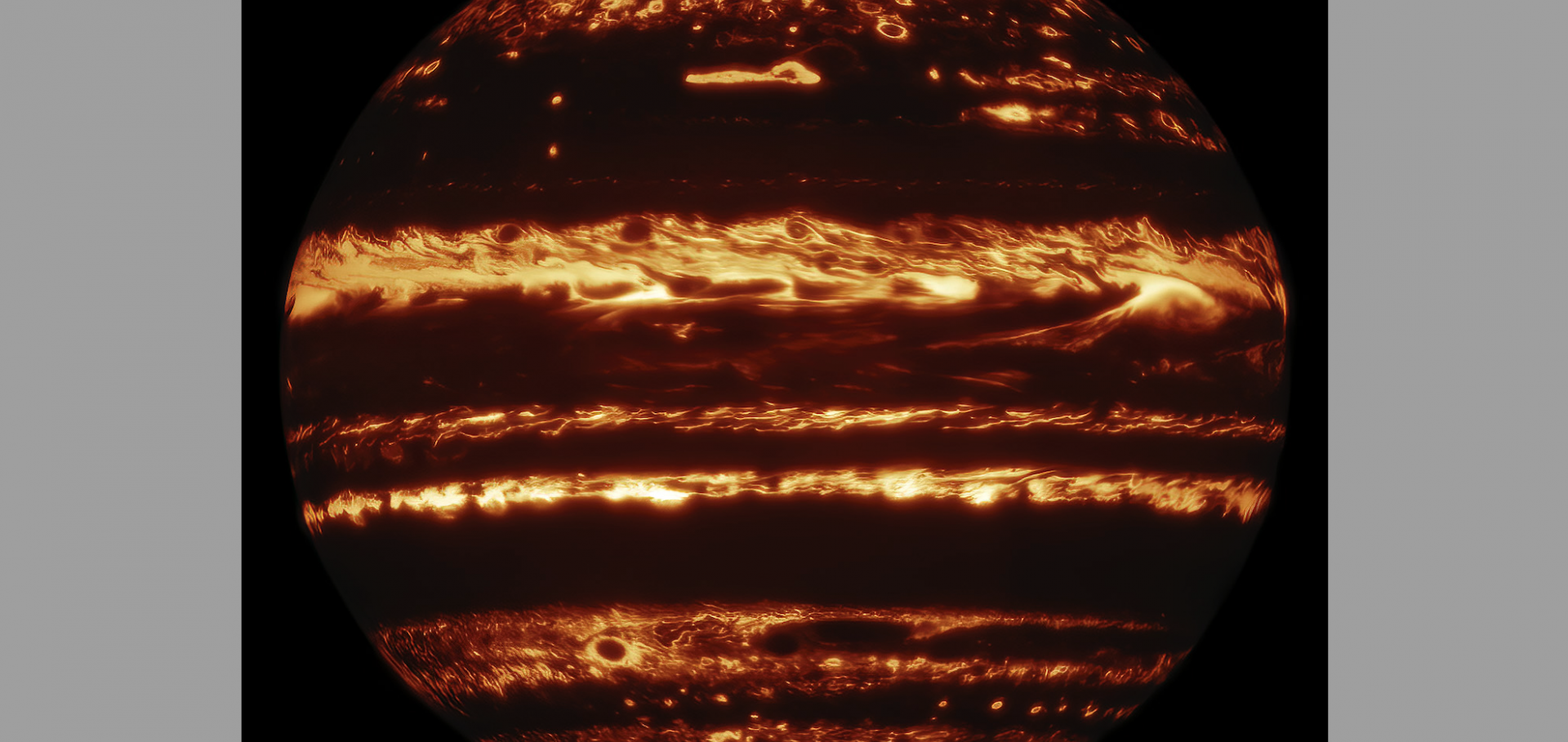Modelling the day–night temperature variations of ultra-hot Jupiters: confronting non-grey general circulation models and observations
Monthly Notices of the Royal Astronomical Society Oxford University Press (OUP) 528:1 (2024) 1016-1036
Modeling the day-night temperature variations of ultra-hot Jupiters: confronting non-grey general circulation models and observations
(2024)
Jupiter’s Equatorial Quasi-quadrennial Oscillation Forced by Internal Thermal Forcing
The Astrophysical Journal American Astronomical Society 958:1 (2023) 50
A broadband thermal emission spectrum of the ultra-hot Jupiter WASP-18b
Nature Springer Nature 620:7973 (2023) 292-298
Shallow-water modelling of the atmospheric circulation regimes of brown dwarfs and their observable features
Monthly Notices of the Royal Astronomical Society Oxford University Press (OUP) 525:1 (2023) 150-163


